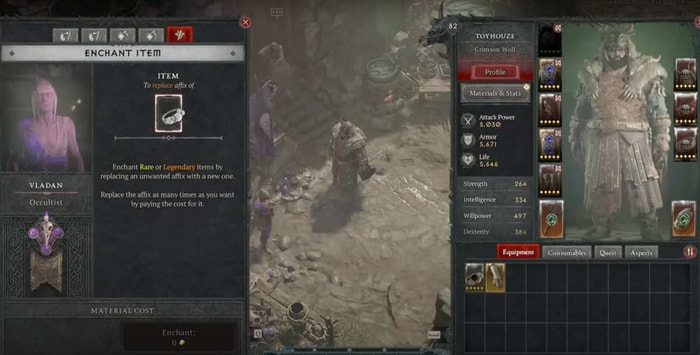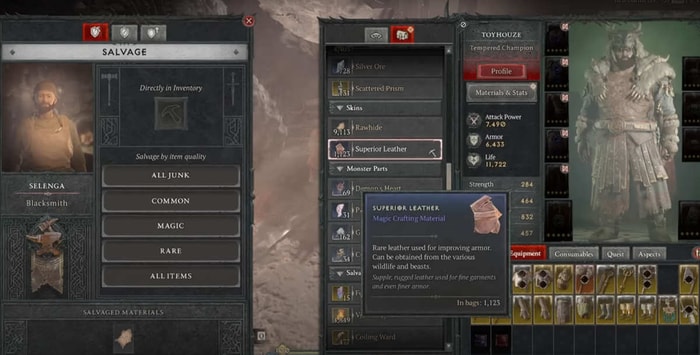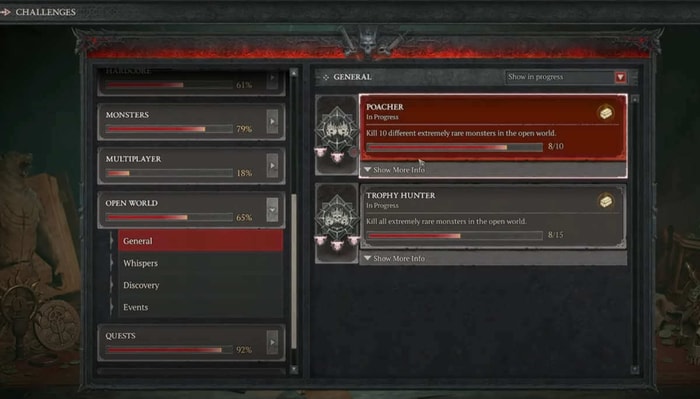Diablo 4: How to Get Good Item Loot and More Gold
In Diablo 4, acquiring abundant crafting materials and gold is essential for enhancing your gear and becoming a formidable force. With diligence, perseverance, and strategic gameplay, you’ll unlock a wealth of crafting materials and riches to bolster your Diablo 4 journey. But sometimes, you may meet some detours on the path of leveling. So, we will go through the players’ puzzled place around treating items this time.
Salvage or Sell?
Players are often unsure if they should salvage or sell the items they find.
Salvaging Materials
As a quick reminder, you need the salvage materials to upgrade your gear. When you salvage armor, you get raw hides. And when you salvage weapons or jewelry, you’ll get things like iron and silver chunks. When you get enough of these, you can go to the Alchemist and combine them to upgrade your ore to silver and upgrade your raw hides to leather. So that is one thing you can do if you want to keep getting more gold.
Salvaging Sigils with the Occultist Rather Than Selling to Vendor
You can mark sigils as junk. But it would help if you were careful with this because you don’t want to sell them to a vendor. You want to salvage them with the Occultist to get that valuable sigil dust used to craft sigils. So you can get the right nightmare dungeon affixes you’re looking for.

Selling Items
You can usually make millions of gold from a single dungeon run which seems like a lot. But once you reach a high level, it’s very expensive to keep rerolling stats on a weapon or do a full refund of your paragon board. So gold is very scarce, and you’re going to want to sell pretty much every item you find once you’ve reached a certain point with your materials.
When you are around level 80, you can start to sell everything. You can sell every single item especially unique items because they are worth much more gold than rare items. It’s about hundreds of thousands of Diablo 4 gold, much more than rare items.
The fastest way to sell your gears is to right-click them all when you’re at the Vendor or hit the spacebar on each item to mark it as junk, then right-click, and everything marked as junk will get sold.

How Do You Do to Get the Highest Item Power Loot
Many players aren’t aware of super unique monster spawns and crazy items they drop. These monsters have the same name and drop the same item every single time. They always spawn in the same spot. Depending on what world tier and what level you are in, the quality of what they drop is going to change dramatically. It could just be a regular item, but it also could be a sacred or ancestral item.
Reaching a High Level to Get Better Loot
These super-unique monsters drop the game’s highest Diablo 4 item power loot. However, because they are in the open world, that means they will also scale to your level, whether higher or lower. If you find these monsters before level 100, then the item power will scale to whatever level you are, and as you level up, you’ll probably find something with a higher item power.
Not Bad to Get Three Stats
Once you are at a high level and slay these Monsters, which drop the items with higher item power than what can be found from other monsters, you will find these items don’t have four stats like other gear. Instead, they have three stats. However, these three stats can roll higher than any other stats from items with four. The rare items that drop from rare monsters will always have the same affixes. But since the world scales with your character, the higher level you are, the higher these affixes can go.
Cheaper to Reroll at High Levels
Besides, the cost of rerolling these affixes is dramatically reduced when rerolling items from rare monsters. At level 82 trembling ring can grant up to 1 000 bonus Max life. If you want to reroll that, you can wait to get that 1000 increase Max life. Then you can spend six gold to reroll that stat of your choice. How cheap it is!
But at level 95 or higher level, the cost of rerolling some of these items that are actually best in slots for certain builds is based on the vendor price of an item.
